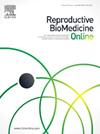Adenomyosis: the missed disease
IF 3.7
2区 医学
Q1 OBSTETRICS & GYNECOLOGY
引用次数: 0
Abstract
Adenomyosis, a menstruation-related uterine disorder, refers to the presence of endometrial stroma and glands within the myometrium and is typically observed in reproductive-age women. The pathogenesis explaining the migration, persistence, proliferation and differentiation of ectopic endometrial cells includes a genetic and epigenetic background, an oestrogen/progesterone receptor imbalance and an inflammatory reaction driven by local immune dysfunction, along with fibrosis and neuroangiogenesis within the myometrium. In the past, it was thought that adenomyosis almost exclusively affected multiparous women after 40 years of age and the diagnosis was generally confirmed upon hysterectomy. Nowadays, using imaging techniques such as transvaginal ultrasonography and magnetic resonance imaging, adenomyosis is increasingly identified in young women with dysmenorrhoea, dyspareunia, abnormal uterine bleeding and heavy menstrual bleeding, and also in infertile patients. Furthermore, adenomyosis often coexists with other gynaecological conditions, such as endometriosis and uterine fibroids. Despite the improvement of non-invasive diagnostic tools, the awareness of the condition is still poor and the diagnosis is often missed, due also to a heterogeneity in clinical presentation and imaging criteria. In addition, medical and surgical management do not follow shared recommendations, even though adenomyosis requires a lifelong management plan, including pain and bleeding control, fertility preservation and pregnancy complications.
b子宫腺肌症:错过的疾病
子宫腺肌症是一种与月经有关的子宫疾病,是指子宫内膜间质和腺体在子宫肌层内的存在,通常见于育龄妇女。解释异位子宫内膜细胞迁移、持续、增殖和分化的发病机制包括遗传和表观遗传背景、雌激素/孕激素受体失衡和局部免疫功能障碍驱动的炎症反应,以及肌层内的纤维化和神经血管生成。过去,人们认为子宫腺肌症几乎只影响40岁以上的多胎妇女,通常在子宫切除术后确诊。目前,利用经阴道超声和磁共振成像等成像技术,越来越多的发现子宫腺肌症出现在有痛经、性交困难、子宫异常出血和月经大出血的年轻女性以及不孕症患者中。此外,子宫腺肌症常与其他妇科疾病共存,如子宫内膜异位症和子宫肌瘤。尽管非侵入性诊断工具有所改进,但由于临床表现和影像学标准的异质性,对该病的认识仍然很差,诊断经常被遗漏。此外,尽管子宫腺肌症需要终身管理计划,包括疼痛和出血控制、保留生育能力和妊娠并发症,但医疗和手术管理并不遵循共同的建议。
本文章由计算机程序翻译,如有差异,请以英文原文为准。
求助全文
约1分钟内获得全文
求助全文
来源期刊

Reproductive biomedicine online
医学-妇产科学
CiteScore
7.20
自引率
7.50%
发文量
391
审稿时长
50 days
期刊介绍:
Reproductive BioMedicine Online covers the formation, growth and differentiation of the human embryo. It is intended to bring to public attention new research on biological and clinical research on human reproduction and the human embryo including relevant studies on animals. It is published by a group of scientists and clinicians working in these fields of study. Its audience comprises researchers, clinicians, practitioners, academics and patients.
Context:
The period of human embryonic growth covered is between the formation of the primordial germ cells in the fetus until mid-pregnancy. High quality research on lower animals is included if it helps to clarify the human situation. Studies progressing to birth and later are published if they have a direct bearing on events in the earlier stages of pregnancy.
 求助内容:
求助内容: 应助结果提醒方式:
应助结果提醒方式:


